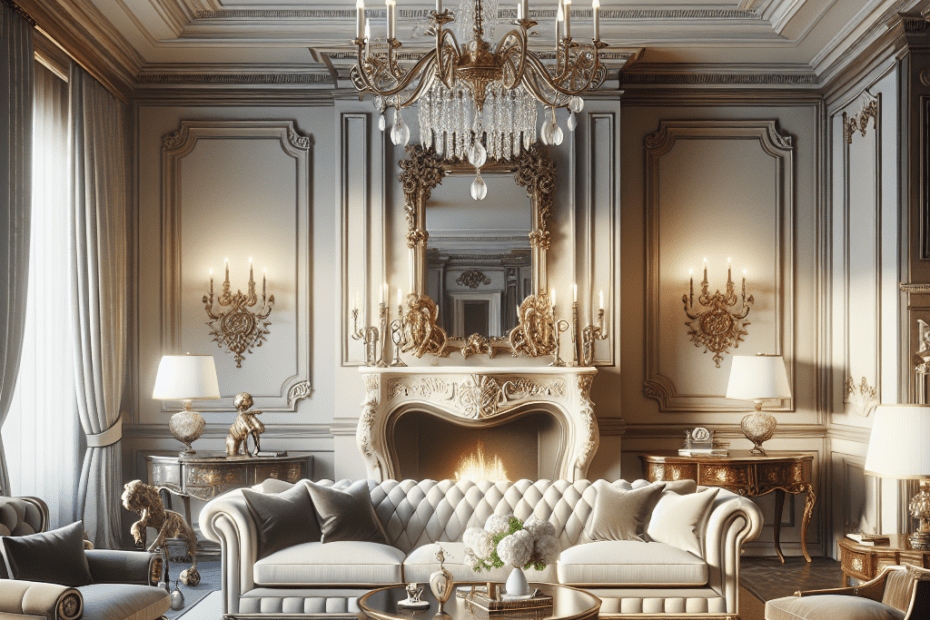“`html
Introduction: Designing the Perfect Formal Living Room
When setting up a formal living room, they often find themselves facing a myriad of decisions. With the room serving as a space for hosting guests, demonstrating sophistication, and showcasing style, they must carefully consider each piece of furniture and decoration. Trying to achieve an ideal formal living room layout can transform their space into an elegant retreat, perfect for making memorable first impressions.
The Importance of a Thoughtful Layout
They might wonder why so much emphasis is placed on the layout of a formal living room. According to a Houzz survey, 67% of homeowners report that well-arranged living spaces contribute significantly to personal satisfaction and home enjoyment. Such findings underscore the importance of putting thought into furniture arrangement, ensuring that not only aesthetics but also comfort and functionality are prioritized.
Steps to Achieve the Ideal Formal Living Room Layout
1. Identify the Focal Point
Before arranging furniture, they should identify the room’s focal point. It might be a grand fireplace, an expansive window with a view, or an ornate artwork. By centering the room around this element, they encourage conversations and admiration naturally.
2. Plan the Seating Arrangement
Seating is a crucial aspect of a formal living room. They should aim for a setup that fosters interaction. A traditional option is the U-shaped seating arrangement, which allows for intimate conversations while directing attention toward the focal point.
| Seating Type | Benefits |
|---|---|
| U-shaped | Encourages conversation, directs focus, adds symmetry |
| L-shaped | Best for smaller areas, maximizes space |
3. Consider Flow and Functionality
They should think about how people will move through the room. Ensuring there is enough space to walk around furniture pieces without obstacles is crucial. A well-thought-out formal living room layout should provide clear pathways and comfort.
4. Balance and Proportion
Balance involves distributing visual weight evenly across the room. They can achieve this by using similar scales and styles of furniture. For instance, matching an oversized sofa with equally substantial chairs can prevent one side of the room from feeling heavier.
Adding Decorative Elements
After arranging the primary furniture pieces, they are ready to add personality with decorative elements. Items such as area rugs, curtains, and artwork layer texture and color into the space. A well-chosen area rug can anchor the seating area and pull together the room’s visual elements.
Statistics and Data
A Statista report shows that 53% of interior designers agree that furniture arrangement significantly impacts overall room perception and ambiance. Furthermore, 75% of homeowners favor layouts that allow for easy reconfiguration to accommodate gatherings.
Key Takeaways
- Identifying a focal point enhances the formal living room’s appeal.
- Seating arrangements like U-shaped and L-shaped facilitate conversation and space utilization.
- Flow, balance, and proportion are critical for a practical and attractive layout.
- Decorative elements should complement the furniture arrangement to add character.
FAQ Section
1. What is the main purpose of a formal living room?
A formal living room serves to entertain guests, showcase sophisticated decor, and offer a space of elegance and style.
2. How can I make my living room look more formal?
They can achieve a formal look by using high-quality materials, symmetrical arrangements, and adding classic decorative elements like artwork and elegant lighting.
3. What furniture pieces are essential in a formal living room?
Essential furniture includes a centerpiece sofa, matching chairs, a coffee table, and elegant accessories like lamps and artworks.
4. How does room flow affect a living room layout?
Room flow ensures that people can move comfortably throughout the space, maintaining clear paths and accessibility to seating areas.
5. Why is balance important in a room layout?
Balance prevents any part of the room from appearing too heavy or cluttered, creating a harmonious and visually appealing space.
“`
Integrating these elements into a formal living room can foster a sophisticated atmosphere that guests and homeowners appreciate alike.
